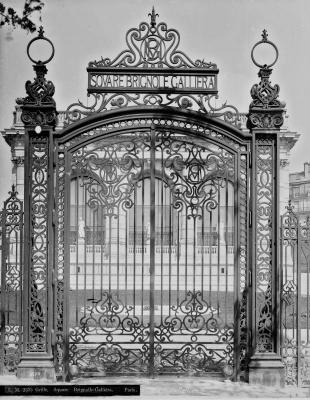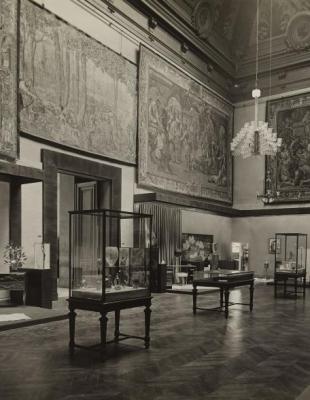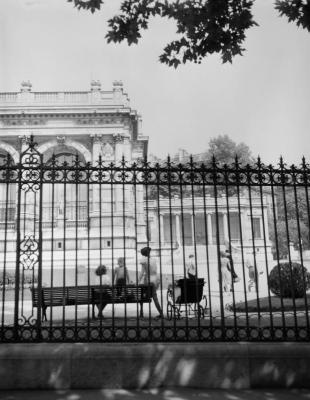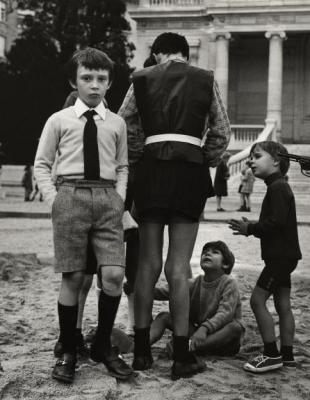Main menu
History of the Building
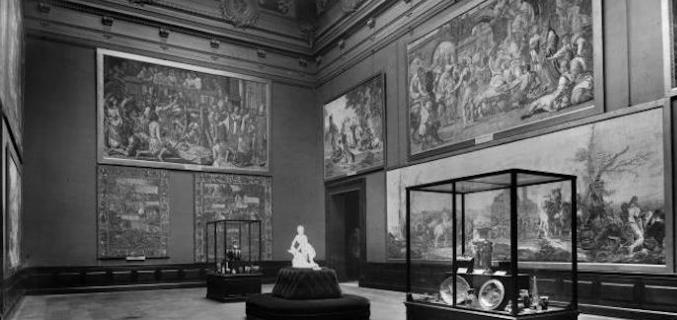
After opening in 1895, the Palais Galliera served a number of different purposes before the City of Paris definitively made it a fashion museum in 1977.
Quick access to chapter:
From an innovative idea…
Go to top pageOn 15 April 1878, the Duchesse de Galliera made it known that she wished to leave her art collection to the French nation, on the condition that it be exhibited in a specially built museum. In addition, she proposed financing such a museum on a large plot of land she owned. Her requirements were clear: the museum was to be set in a square with specially created streets on both sides to be named Rue Brignole and Rue Galliera. The museum itself was to bear the name Brignole-Galliera.
On 11 July 1878 the Paris City Council gratefully accepted her proposition and on 31 October she duly formalised the donation. One stipulation, however, was that she would retain lifetime possession and occupation of the museum and its outbuildings; their use would revert to the state only on her death.
Unfortunately the project was not without its disappointments for the duchess. No sooner had work begun than it was almost brought to a halt by a question of alignment of the buildings.
This initial problem was resolved, but it brought to light a major error on the part of the notary who had drawn up the papers: he had stipulated the City of Paris as the donatee, whereas the duchess had intended the gift for the French state. Repeated attempts to put things right proved fruitless and the situation was not helped by the political climate of the time. On 7 October 1884 the duchess took the radical step of bequeathing her art collection to the Palazzo Rosso in Genoa, which meant it would never be shown in the Palais Galliera. The duchess would, however, finance the completion of the building, which would at once become the property of the City of Paris. Her death on 9 December 1888 halted the building works, already well advanced, but they were restarted by the architect, Paul-René-Léon Ginain, and finished on 27 February 1894.
Reactions were not slow in coming. Some journalists spoke highly of the duchess's philanthropy and of the square itself, but the museum was often criticised as too small and unsuited both to an extensive collection and large exhibits. What was to be done with this elegant building lacking the collection originally intended for it, and now a kind of empty jewel box?
…to a museum of industrial design
Go to top page'Now, with the Galliera exhibitions, industrial design has reclaimed its place in the realm of beauty.' — Maurice Quentin-Bauchart
An official decision was handed down as to the Palais's future and on 19 December 1895 it opened as an industrial design museum. Henceforth it was home to regular exhibitions that drew a public keen to discover this new form of art.
In the early 20th century art as applied to industry was seen as inferior to the major art forms of architecture, sculpture and painting. Bent on countering this preconception, the writer-historian Maurice Quentin-Bauchart asked the City of Paris to programme industrial design exhibitions at the Palais Galliera. Two exhibitions were organised each year: one in the autumn, covering all aspects of industrial design and the other in the spring, devoted to the work of a single artist or a particular subject or theme.
The turning point: 1954 and the 'peintres témoins de leurs temps'
Go to top page1954 brought the first of the annual Peintres Témoins de Leurs Temps (Painters Bearing Witness to Their Time) exhibitions in a Palais Galliera now refurbished and better suited to presenting works of art. The great artists of the moment were on show there, among them Utrillo, Rouault, Matisse, Chagall, Buffet, Picasso, Léger, Braque, Kisling and Gromaire. Each exhibition had its own theme, always relating to man and his environment: People in the City in 1954, Bread and Wine in 1965 and The Life of Things in 1973. Only figurative artists were invited to exhibit.
Auctions at the Palais Galliera
Go to top pageFrom 1960 onwards the Palais Galliera also served as an auction venue. Under the terms of an agreement with the City, the Compagnie des Commissaires-Priseurs de Paris – the Paris auctioneers association – had the right to hold sales there for two weeks every auction season. Only period furniture, curios and old masters were offered for sale.

